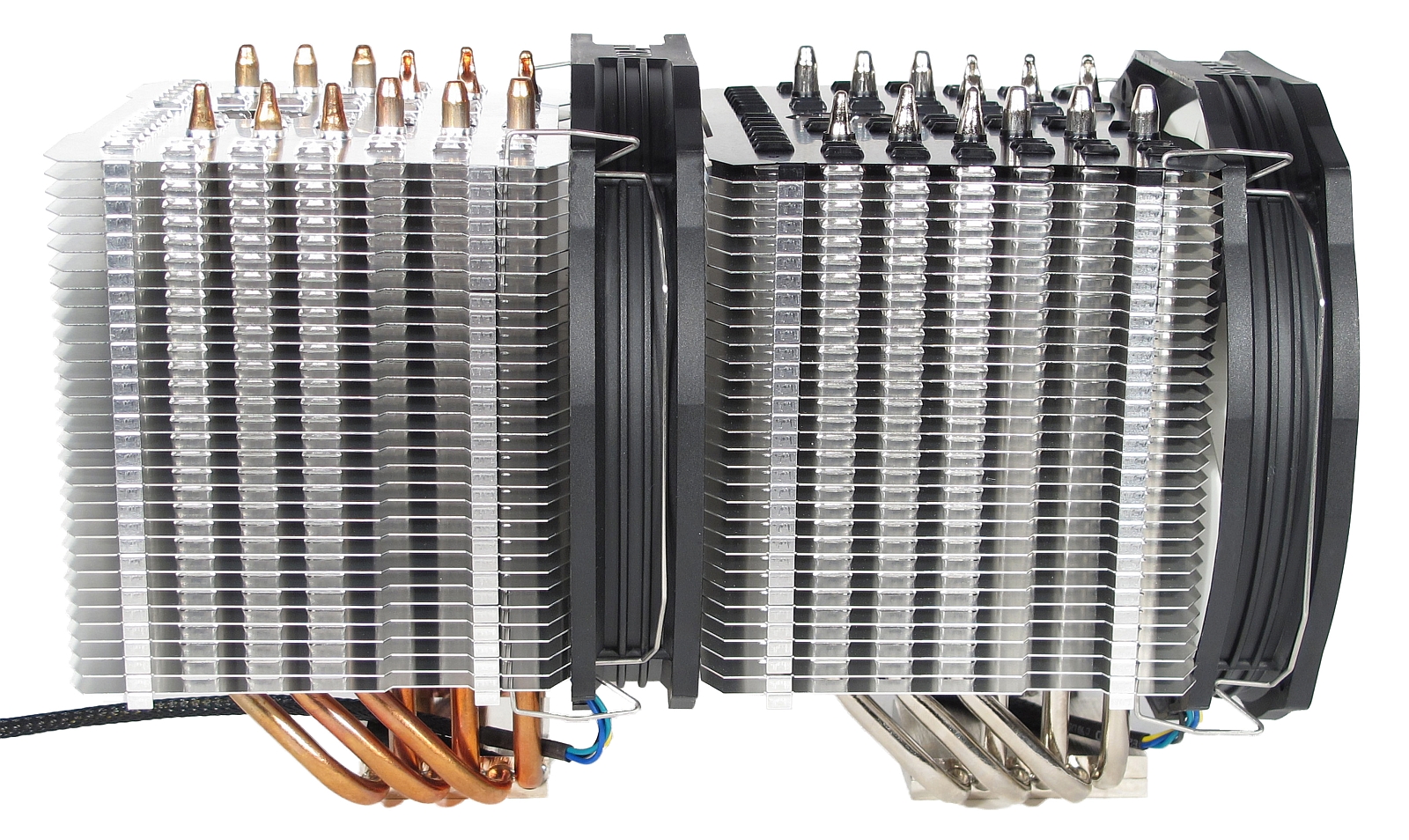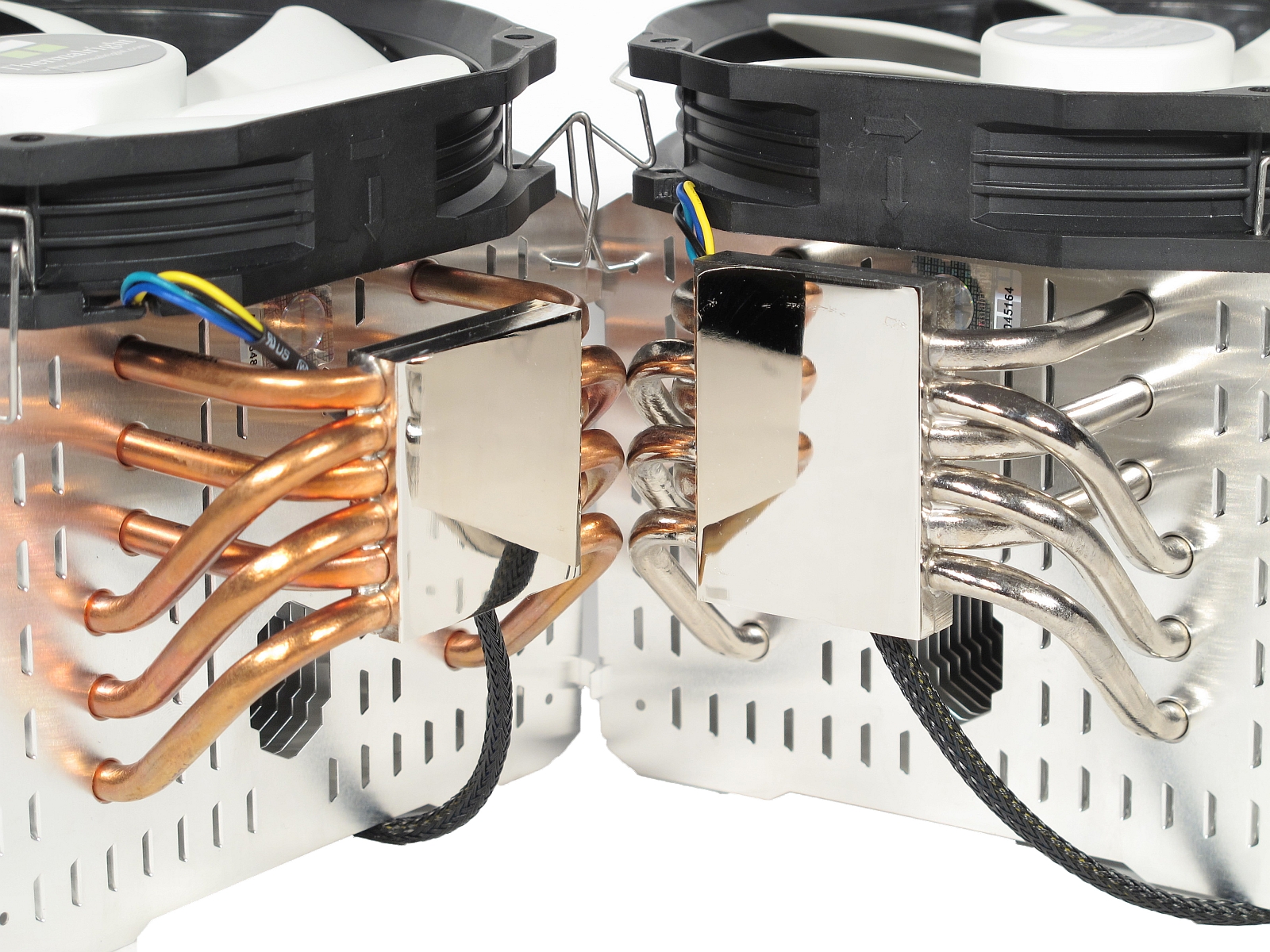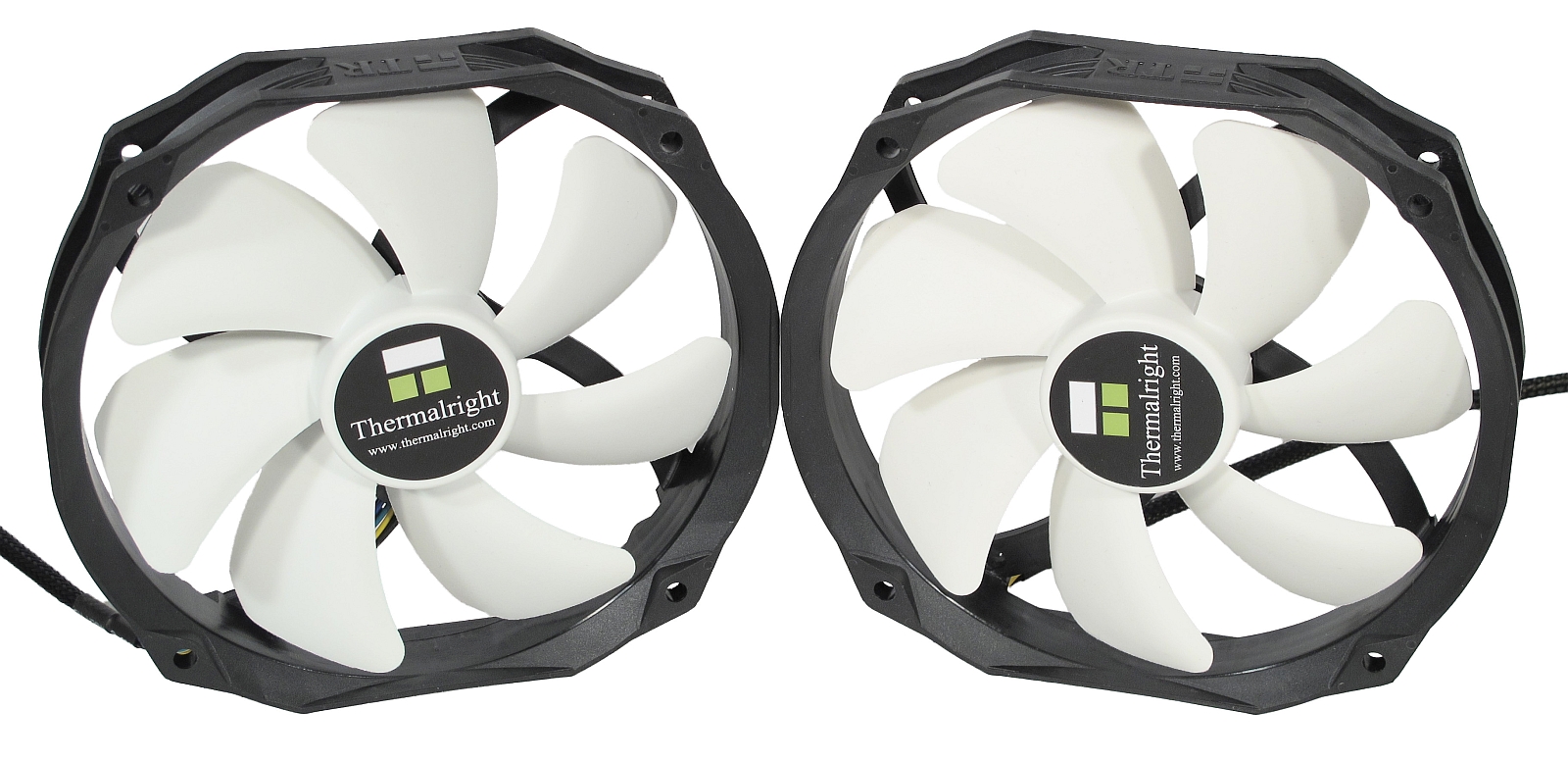Thermalright Macho Heat Sink Family Round-Up
We've seen several versions of Thermalright's HR-02 Macho since 2011, including the smaller Macho 120 and the huge HR-22. We tested the latest iteration, which sports a new base plate optimized for Intel's LGA 2011-v3 interface.
Comparison Test: Cooler And Fan
Cooler Comparison
While the changes made to the latest Macho cooler aren't earth-shattering, revision B of the HR-02 Macho does sport a few modifications.
The overall construction of the HR-02 Macho Rev. A (BW) and Rev. B is identical. A huge cooling block and a relatively large fin-to-fin distance of 3mm (0.012“) help these coolers perform well in a semi-passive application or at drastically reduced fan speeds.
Thermaltake punches U-shaped holes into the cooling fins and bends up the tiny tabs, which is supposed to break up the laminar air flow and thus enhance performance.
The most recent version of the HR-02 Macho comes with an updated design; its black top and nickel-plated heat pipes reflect the most recent design trends.
All told, Thermalright offers three different cooler sizes based on the same basic design. These range from the 6"-high Macho 120 with five 6mm heat pipes to the 6½"-high Macho HR-02 to the wider, deeper, but at 6.6"-high, only slightly taller HR-22, which sports a whopping eight 6mm heat pipes.
In spite of their large dimensions, the models are all compatible with front DIMM slots; the Macho family members stay clear of your system memory. This is achieved through the coolers' asymmetrical design. Half of the heat pipes (three on the two smaller models and four on the HR-22) are bent backwards, allowing the cooling tower to be moved back. This configuration is mostly geared towards the mainstream interfaces from Intel and AMD, where the only DIMM slots are in front.
While the coolers overlap some of the DIMM slots at the rear, they're also high enough to accommodate the installation of RAM with heat spreaders. For the Macho HR-02, DIMMs can be up to 2" tall. Incompatibilities should arise rarely, if ever.
Get Tom's Hardware's best news and in-depth reviews, straight to your inbox.
However, the huge HR-22 overlaps all rear DIMM slots. And the first slot is right underneath the heat pipes, which doesn’t give you room for tall heat spreaders. If you own modules with big spreaders, make sure they don't touch the heat pipes. Otherwise, the RAM will be heated up beyond its spec.
The smaller Macho 120 Rev. A offers less cooling fin real estate, mostly due to the fact that it is lower, and sports only five heat pipes. This makes it an ideal choice for cases that are too slim for the regular-size HR-02. We used the first-generation Macho 120 in this test, the one without the Rev. A suffix. The only difference between them are the nickel-plated heat pipes and the black paint job on top. For a fair comparison, we mounted the Rev. A’s fan on the old Macho 120 cooler.
The real innovation of the HR-02 Macho Rev. B compared to its predecessor is the larger base plate. Since LGA 2011 processors have a large heat spreader, you want the base plate to approach or even match the heat spreader’s size. The new base was taken from the Macho Zero. In fact, the Macho HR-02 and the Macho Zero are all but identical if you disregard the black nickel plating of the former and the enclosed white gloves.
While the Thermalright HR-02 Macho Rev. A is available for $53, expect the Rev. B to cost a few dollars more. But the optimized fan, better looks and larger base plate are certainly worth a small premium.
Fan Comparison
Because the HR-22 is shipped without a fan, we also equipped it with the new TY-147A, the TY-147’s successor. Armed with identical fans, comparing the HR-22 and the HR-02 should be fair and accurate.
The new fan and its predecessor look the same, and even the TY-147 was famed for its quiet operation. While the TY-147A has the same frame, the same rotor blades and even sports the same maximum fan speed (1300 RPM), its minimum is now a mere 300 RPM, down from 900. If you want to do some testing of your own, keep in mind that these numbers vary in real life. Plus/minus 10% is not uncommon.
Our TY-147 sample operated down to a tad above 500 RPM, which is well below the minimum speed in its spec sheet. We expected the TY-147A to dip down to 330 RPM, allowing for 10% variation. We'll cover its actual floor in more detail shortly.
We also looked at the Macho 120 Rev A’s fan, the TY-121. This 12cm fan sports the same design of its brethren, but it is smaller and employs seven rotor blades. Its speed range is quoted as 600 to 1300 RPM.
Current page: Comparison Test: Cooler And Fan
Prev Page Test Platform And Overview Next Page Results: Cooling Performance, RPM Curve And Sound Level-
nucas And... were is Noctua?Reply
If these coolers are the benchmark for competing brands, were are they.
-
cib24 This was a great read and very informative with regards to the Thermalright CPU coolers. I hope that the next article by Kai Tubbesing is a comparison test of CPU coolers and is written with the same attention to detail and careful testing procedures.Reply -
Onus Reply"...the updated model not only comes with a few design improvements like nickel-plated heat pipes and a black paint job for the topmost cooling fin..."
Please use the word "changes" instead of "improvements" unless you can show better cooling performance attributable to these two things.
"Indeed, the HR-02 Macho Rev. B stands out from the crowd."
With not a single other member of "the crowd" in these tests, this statement is meaningless marketing drivel, and the whole article nothing more than an advertisement. Particularly as a Moderator, I try not to be critical of the site, but this might be the worst example of misrepresentation I've ever seen here. I think you can do a LOT better.
-
mapesdhs Alas I agree, without comparisons to existing coolers (and please dear grudReply
include a normal TRUE!) the article is useless. Are any of these better than
the venerable NH-D14? The equivalent Phanteks? What about an H80? One
cannot make a purchasing decision based on the summary. I'm sure toms
wouldn't do a GPU roundup based on a single manufacturer's product line,
eg. Zotac; readers would rightly want to know how they compared to ASUS,
EVGA and all the others.
I'm glad I started doing a particular thing with cooler reviews before I invest
time reading from the start: I go straight to the results page, and if it doesn't
have coolers from other vendors then I don't bother reading. What people
want is something like this. Ditto reviews for fans, etc.
Ian.
-
jtd871 SPCR's recommended heatsinks summary provides a good comparison of heatsink performance (cooling performance/noise level) and links to the original reviews for more detailed information. It helps that SPCR has standardized on a 130W TDP CPU as the heat source in order to provide an 'apples to apples' comparison.Reply
I will credit Tom's for doing a better job of reporting on performance and noise over the range of the fan speeds recently. -
Calculatron Reply15183168 said:Alas I agree, without comparisons to existing coolers (and please dear grud
include a normal TRUE!) the article is useless. Are any of these better than
the venerable NH-D14? The equivalent Phanteks? What about an H80? One
cannot make a purchasing decision based on the summary. I'm sure toms
wouldn't do a GPU roundup based on a single manufacturer's product line,
eg. Zotac; readers would rightly want to know how they compared to ASUS,
EVGA and all the others.
I'm glad I started doing a particular thing with cooler reviews before I invest
time reading for the start: I go straight to the results page, and if it doesn't
have coolers from other vendors then I don't bother reading. What people
want is something like this. Ditto reviews for fan reviews, etc.
Ian.
Boom goes the dynamite.
http://www.tomshardware.de/cpu-kuhler-test-prozessorkuhler-cooling-cpu-cooler,testberichte-241700-7.html
The German Tom's Hardware team has been delving into cooling for the last couple months, which explains why we have been getting some of the articles we have being thrown our way. (This article was published about a month ago, I think?)
I actually hope that Tom's Hardware does more round-ups like this, and I hope that they do the testing for the True Spirit family of Thermalright heatsinks next. The more data we have that is like this, and have it in one place, the better off we all are. And the less we'll feel the need to see it as a requirement to include something like an Noctua NH-D15, or Cooler Master Hyper 212 EVO.
-
Onus Yes, but this wasn't a "round up;" it was a showcase of a single company's products. The data presented may be 100% reliable (and I hope I didn't imply that it wasn't), but without comparative results from other products, does not assist in making a buying decision or otherwise judging the merits of the coolers.Reply -
dovah-chan Well considering how many benchmarks there are including all the coolers such as the Phanteks PH_14TCPE, Noctua NH-D15, Cryorig R1 Universal, be quiet! Dark Rock Pro 3, and many others, it should be pretty obvious where/what these products stack up at.Reply
This is just a general evaluation of a lineup of coolers. Just go find another site that benches at a similar setting with a 5820K or comparable socket 2011 CPU and go look at it and stop complaining about them not having results when there are already tons out there that you can take two minutes to look up and compare to.




